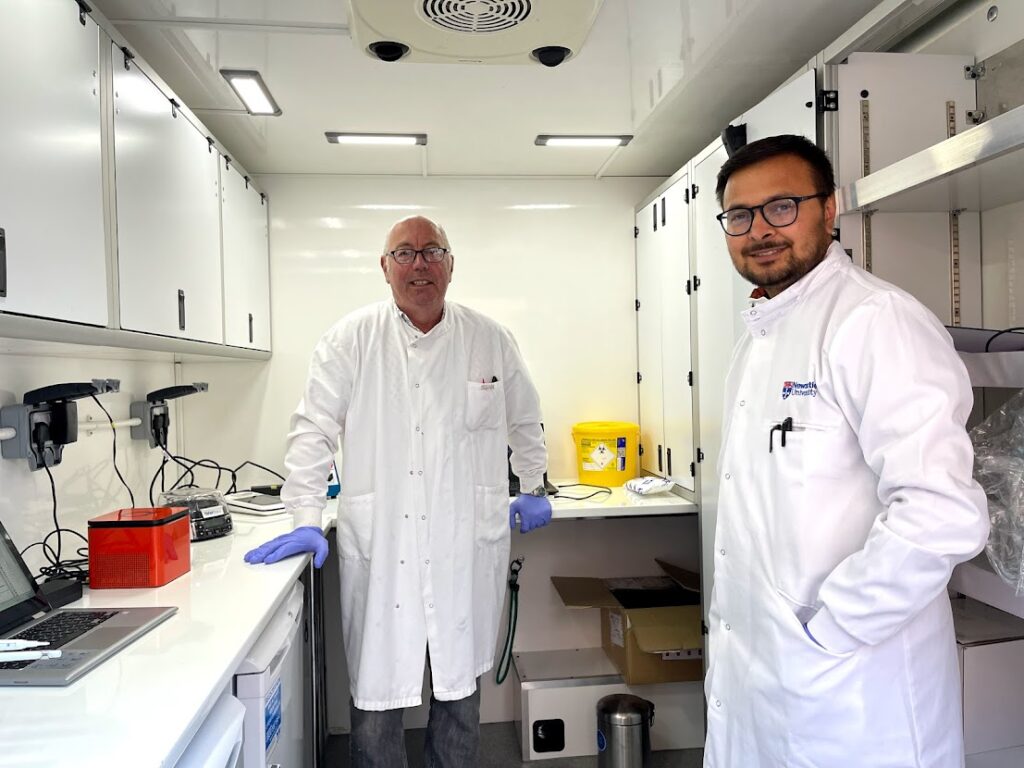Celebrating Aom’s thesis submission


Our recent paper reports that combining red LEDs and sunlight in deep high rate algal ponds has a high potential for digestate treatment where extensive pond areas are prohibitive. A great outcome of our continuing collaboration with lead author and former colleague Cesar Mota, who is now an academic at the Federal University of Minas Gerais in Brazil.

Dr Haile and I participated in a podcast on citizen science methods to address flooding and water pollution risks in the Akaki catchment, Addis Ababa, Ethiopia.

Our latest paper describes a mobile laboratory for fecal pollution source tracking with onsite qPCR assays. In 3 hours from sampling to results. Excellent work by Rixia Zan, Kishor Acharya, and Adrian Blackburn.

UKRI are presenting our lab in a suitcase for molecular water microbiology as one of their research impacts and outcomes case studies.

Molecular markers link Vibrio cholerae hazards in the Akaki catchment to human sewage pollution. 0.6-20% of fecal coliforms in the rivers of the catchment had ESBL producing antibiotic resistance traits. Hazards were highest in the dry season when river water is used for irrigation. Read our paper in Science of the Total Environment.

Sometimes you find the opposite of your hypothesis. Despite of the river pollution from domestic, industrial, and commercial activities in Addis Ababa, higher metal levels were found in nails of residents living in the upstream rather than the downstream area of the Akaki river catchment. Excellent work led by Dr Dessie and colleagues in Ethiopia.

Universities could use their massive land holdings to offset carbon in their own backyard. My Piece in The Conversation is based on Jiaqian Wang’s work. The figure panel a) below shows how arable land stores the least amount of carbon per surface area, while panel b) shows that most of the current land use at Newcastle University’s Nafferton and Cockle Park farms is arable. Panel c) shows how medieval slash and burn agriculture created a boundary between agricultural land and woodland at Nafferton farm, that leaves trees only in the most inaccessible places such as Whittle Dene.

I co-wrote Reflections on World Toilet Day with Dr Kishor Acharya and Dr Alemseged Tamiru Haile from IWMI based on five years of Global Challenges Research Fund (GCRF) supported collaborations with partners across the World. Our main take-away message: Much remains to be done, in low-, middle-, and high-income countries alike, to achieve SDG6.

Jiaqian Wang published a paper describing how Newcastle University could offset up to 50% of its scope 1 and 2 greenhouse gas emissions by land use change at its research farms. Read also our press release on the topic.
